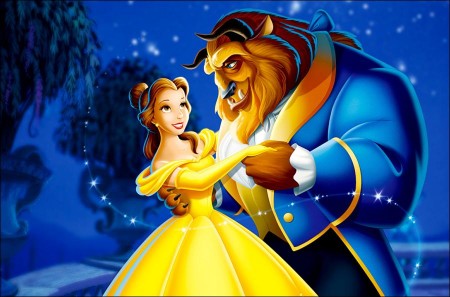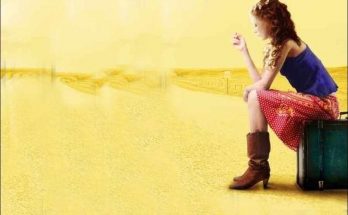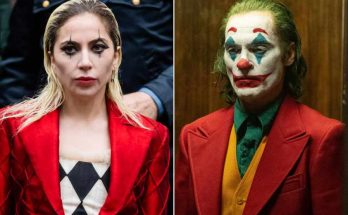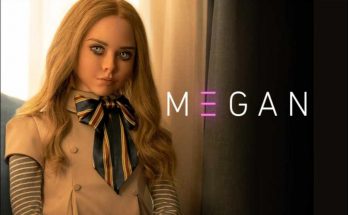Walt Disney Pictures’ now-classic animated musical feature “Beauty and the Beast” began its life as lines on paper and the imaginations of many artists. When released in 1991 to great critical and popular acclaim, the film was lauded not only for its brilliant artistry and time-honored tradition of being hand-drawn, one frame at a time, but also for the innovative use of the computer as a tool for adding production value and creating exciting new imagery. Although in its infancy at the time, Disney’s Computer Generated Imagery (CGI) department was on the cutting edge of new technology and the artists and technicians found ways to enhance the look of the film while breaking new ground at the same time.
Use of the computer is evident in several parts of the film, most notably in the creation of a three-dimensional ballroom background for the “Beauty and the Beast” song sequence. The computer allowed dramatic camera moves on the hand-drawn characters as they danced and fell in love.
According to CGI artistic supervisor Jim Hillin, “The ballroom sequence featured the first computer-generated color background to be both animated and fully dimensional. What this means is that the background is literally moving. This gives the impression of sweeping camera moves and perspectives as well as theatrical lighting that would otherwise be impossible. It introduces live action techniques into the animated world. Here the camera plays a very important role in establishing the mood and helps us to experience what the characters themselves are feeling.”
The ballroom sequence is the bonding moment of the film when the two main characters finally get together. “For us as filmmakers the computer offered a way to get heightened emotions on the screen and more dramatic effects that we could not have gotten conventionally,” says producer Don Hahn. “It allowed us to move the camera around and take a look at the room instead of just looking at a flat piece of artwork. Technology as a whole is an extension of our fingers, hands and minds. Computer graphics lets us go beyond what we can achieve with pencil and paper or paint and a brush.”
Specially trained artists, animators and software experts working in concert with the layout, art direction and background teams created the ballroom itself in the computer. From the rough sketches provided, the room was constructed a section at a time. The dimensions of the room are enormous with 72-foot ceilings, a length of 184 feet from door to door, and a width of 126 feet. There are 28 wall window sections around the room and a dome that is 86 feet by 61 feet. The mural in the dome was hand painted and then texture-mapped into the background with the help of a computer.
The computer graphics team also played a key role in the “Be Our Guest” sequence where an extraordinary candelabra with can-canning forks was created using this new technology. Also animated this way were hundreds of dancing plates, goblets and bubbles. These elements were then blended with traditional hand-drawn character animation and effects animation resulting in an elaborate and fun-filled sequence unlike any other. In other parts of the film a hay wagon, carts, an 18th-century classic-Baroque grand piano and pages in a book were animated using a similar process.
Flash forward to the 21st century. What was highly innovative technology in the late 1980s we now see as an artistic stepping stone to the remarkable achievements in today’s use of computer generated animation. In the final decades of the past century, turning “Beauty and the Beast” into a 3D film would have required that the artists separately redraw what the characters would look like from the left eye and the right eye.
However, through the magic of Disney and the leaps in modern computer animation technology developed at the Walt Disney Animation Studios, a team of artists, under the guidance of stereographer Robert Neuman, found a way to breathe more dimensional life into “Beauty and the Beast” by turning it into a 3D experience.
Neuman, whose background is in the cinematography area of animation and who also has a technical grounding as an electrical engineer, was the ideal candidate to take “Beauty and the Beast” to an elevated level of 3D. “When the challenge of 3D came to me, in terms of visual storytelling, I thought it would be great to be able to tell a more immersive story for the audience,” Neuman says of his interest in working on this project.
Nevertheless, numerous and dramatic challenges awaited Neuman and his team. In discussing the complications of making “Beauty and the Beast” into a 3D film, Neuman emphasizes that because there was no dimensional reality in which to put a second camera, he and his team had to invent a brand new set of computer tools that would allow the filmmakers to sculpt depth into the existing images and thereby create a second eye in order for the 3D to be achieved.
“In making a live-action film a director could simply add a second camera to get the second eye view,” Neuman says of the task that he and his team faced. He explains that the 3D conversion technique they came up with – pixel displacement – enables the artists to take each image and create a “depth map” that corresponds to that image. “The depth map is simply a grayscale image that allows our artists to sculpt out a relief map – the depth map – of the image. We’re then able to take that, apply it to the original image and displace the pixels to create a second eye view,” he says.
Producer Don Hahn adds, “I think we were the beneficiaries of having the original movie made on the CAPS system, which was the Computer Animation Production System that Disney created to produce animated movies back in the late ’80s. We were able to store the movie on individual levels. In other words, if we had a scene of Belle and the Beast together at a table in the castle, we would have the characters on one level, and the table on another level, and the background on still another level. So we had a nice separation when we brought the scenes back online.” The computer gives the filmmakers total control over that illusion.
Objects that are close up, such as Belle and the Beast dancing, can create a very intimate environment, as though the audience is sitting right there in the scene. Or if a spectacular shot is required, perhaps of the countryside with Maurice going off to sell his inventions, that epic shot is given a more gentle treatment of 3D. Many factors are at play and the story is enhanced by that 3D decision-making. Stereographers like Robert are crucial to the process. Take for example the famous ballroom sequence. Although spectacular in its original form, Neuman and his team of artists were able to enhance what was already one of animation’s most memorable scenes. “We use 3D to support the storytelling narrative,” Neuman says. “Like any other aspect of film, such as the music score, 3D is used to enhance big emotional moments and to help build up to the emotional climax. For those big moments we expand the 3D. We put more of the three-dimensional effects into it. For the ballroom scene it was vital to have the right sense of scale. We had to show the grandeur, the majesty of this ballroom. The key to it was to enforce the sense of perception of scale.”
Neuman further explains that the “Be Our Guest” number was especially suited to 3D. “Although it was a bigger challenge than the ballroom sequence because there were shots that had hundreds of levels and every level of artwork requires dimensionalizing, if you look at the original staging, the way the things are blocked and choreographed, you see that it already has a sense of dimensionality.”
From the very beginning of creating a 3D version of “Beauty and the Beast,” Neuman worked with producer Don Hahn and the original directors Gary Trousdale and Kirk Wise, all of whom came in to watch the film and offer their impressions of where in the movie they each thought the big important points for 3D were.
“We had what we call ‘spotting sessions’ and asked ourselves about the aesthetics of where all of the 3D imagery should be,” Neuman says. “Every time we had a new sequence we would come together and review the latest work and I would get their notes. It was great because I knew that we were staying within the vision of the original filmmakers when we were making this.”
The filmmakers agree that the techniques that enabled them to create “Beauty and the Beast” in 3D is so new that this could not have been done just five years ago. “The first time we ever did a dimensionalization was on ‘The Nightmare Before Christmas,'” Don Hahn says. “It was hard, very labor-intensive work. The results however were great, but it took a long time and was very expensive. It still takes a long time and it’s very expensive!” Hahn says.
Hahn adds, “Much of this is about 3D scripting. For a live action movie you write a script of words. In 3D animation we do a 3D script, which allows the dimensional aspect of the movie to also tell the story. We want to show something very visceral and in-your-face dynamic. This might mean pushing something more towards the audience. And for some scenes that are very intimate we might use a really fragile treatment on the 3D. So it’s very calculated and a frame-by-frame challenge. Nothing happens by chance or is automated.
“Beauty and the Beast” was the first hand-drawn film to be dimensionalized into 3D. Disney is the leader in the new technology and regardless of how sophisticated it is, as Hahn says, “It’s important for people to know that it’s not as simple as pushing a button or putting a quarter in a machine and a 3D movies out. It’s all about great artists like Robert Neuman and his crew who must make important creative decisions.”
Curiously, The Walt Disney Studios didn’t initially have any plans to release “Beauty and the Beast” or “The Lion King” theatrically in 3D. They were intended for home entertainment Blu-ray distribution. When the 3D process was completed on “Beauty and the Beast,” the studio at first did not recognize the potential market for the film. In time however with the persuasive efforts of the filmmakers, the distribution executives decided to take a risk. When there was a gap in the release schedule they decided to release “The Lion King” in 3D theatrically. More than a $100 million at the box office later, it was obvious that “Beauty and the Beast” (which had actually been dimensionalized before “The Lion King”) would be welcomed by audiences.
As the Walt Disney Animation Studios continues to lead the way in artistic and technical innovation, it has taken the 3D experience and made it as fresh and comfortable for audiences in ways that most moviegoers would not suspect. “In fact,” producer Hahn says, “we want audiences to forget about the 3D and just enjoy the story.”
To that end, the filmmakers tested the film to determine if the 3D experience hurt anybody’s eyes. According to Hahn, they made many adjustments to ensure a positive entertainment event for the audience. “Early on in this modern 3D craze there were some misfires in 3D,” Hahn says. Some films were rushed into 3D, which actually hurt those movies. People were getting eyestrain and it was a headache inducing experience. But it doesn’t have to be. The modern technology is so amazing, it doesn’t have to feel like a 3D movie did in the 1950s, where you would wear those analog glasses with one red and one blue lens. Some people would walk away with a throbbing headache. 3D now is and should be a painless, really enjoyable experience. We’ve taken that on and made quality changes. We’ve really been at the forefront of changing this.
Although the computer helps with much of those labor intensive aspects of computer animation, it still takes a human being to sit down and look at each frame and make many decisions about what depth plane to put in the movie. It will always require an artistic process.
All of the filmmakers and artists who have been involved with the 3D transformation of “Beauty and the Beast” are in unanimous agreement that they take pride in being part of the great legacy of this iconic film. As Robert Neuman says, “It’s amazing to be able to take these great movies like ‘Beauty and the Beast’ and ‘The Lion King’ and give audiences a new way to see them again. Even if they’re seeing it for the first time, or the one-hundredth time, this is a whole new experience for audiences.”
“It’s a privilege, really, and an honor to be able to bring this movie out,” says Don Hahn. “‘Beauty and the Beast’ has always been special in the hearts of the audience. From the first sneak previews that we did at the New York Film Festival, when it was still unfinished, to the original release, it’s always received a really warm reception. It’s great to go back and relive it now.
One of the most popular and enduring romantic adventures the world has ever known became one of the most ambitious and entertaining animated motion pictures ever brought to the screen when Walt Disney Pictures’ 30th full-length animated feature, “Beauty and the Beast,” premiered in 1991. This classic fairy tale about a beautiful young girl and her encounter with an enchanted beast has long fascinated and intrigued storytellers, filmmakers and their audiences. Through the artistry and imagination of the Disney creative team, an inspired song score by two Academy Award winning songwriters and the contributions of an enormously talented vocal ensemble, this ageold fantasy took on exciting new dimensions that are only possible through the magic of animation.
Set in and around a small French village during the late 18th century, “Beauty and the Beast” follows the fantastic adventures of Belle, a bright and beautiful young woman who finds escape from her ordinary provincial life – and the relentless advances of a handsome but boorish suitor, Gaston – by reading books. When her inventor father stumbles onto the castle of a hideous beast and is taken prisoner, Belle comes to the rescue and agrees to take her father’s place.
With the assistance of the castle’s enchanted staff – a teapot, a candelabra and a mantel clock, among others – she soon learns to see beneath the beast’s exterior to discover the heart and soul of a human prince. Meanwhile, consumed by rejection and jealousy, Gaston reveals that he has the heart of a beast and leads a mob to the castle for a climactic confrontation. “Beauty and the Beast” was the fifth classic fairy tale to be adapted as a Disney animated feature. The tradition began in 1937 with “Snow White and the Seven Dwarfs,” which was based on the famous story by the Brothers Grimm. In the 1950s, Walt Disney and his animators successfully tackled two classic folk tales by French author Charles Perrault – “Cinderella” (1950) and “Sleeping Beauty” (1959). Another famous purveyor of fairy tales, Hans Christian Andersen, was the source of “The Little Mermaid,” Disney’s 1989 release, which went on to become the Studio’s most successful animated feature up until that time.
Heading up the team was producer Don Hahn, a long-time Disney veteran, and two talented young directors, Gary Trousdale and Kirk Wise, who made their debut in that capacity on this film. Ten supervising animators were assigned to specific characters and took on the task of bringing them to life with the assistance of an impressive group of character animators, cleanup artists and other key supporting players. Animators at Disney’s satellite facility at the Disney-MGM Studios in Lake Buena Vista, Florida also contributed to the production.
Using the timeless themes and basic elements of the classic fairy tale as a starting point, writer Linda Woolverton created a fresh and stylish screenplay which became the structural and emotional blueprint for the visual development and storyboarding phases that accompanied it. Executive producer/lyricist Howard Ashman also contributed greatly to the development and structure of the story from the earliest stages. Roger Allers was in charge of story supervision while Brian McEntee and Ed Ghertner handled the art direction and layout duties, respectively. Lisa Keene supervised a team of 14 artists who created 1,300 backgrounds for the film. Sarah McArthur was the associate producer and John Carnochan (“The Little Mermaid”) served as the film’s editor.
Woven into the fabric of the story are six outstanding songs by the Academy Award winning team of Howard Ashman and Alan Menken, the songwriters responsible for Disney’s 1989 animated musical blockbuster “The Little Mermaid.” Here again, Ashman’s sophisticated lyrics combine with Menken’s memorable melodies to provide songs that are not only enjoyable musical interludes but also serve as important story elements that advance the plot and contribute to the development of the characters. Menken, who won an Oscar for Best Original Score for his work on “The Little Mermaid,” also provided an inspired underscore for this project as well. The untimely death of Howard Ashman deprived the world of one of the preeminent creative talents of our time, but his genius lives on in this film and Disney’s animated feature “Aladdin,” for which he collaborated on several songs with Menken. Contributing to the creation of the characters from a vocal standpoint is a talented group of actors and actresses who provided the speaking and singing voices.
Veteran stage actress and singer Paige O’Hara was selected to play the female lead, Belle, from among hundreds of top Broadway talents who auditioned for the part. Her sincerity as an actress combined with her fine singing skills made her the perfect voice choice for the independent, adventure-loving, romantic-minded heroine. Equally impressive in his ability to give the kind of well-rounded performance the filmmakers were looking for was actor Robby Benson, who was cast as the Beast on the basis of his winning audition. The actor brings a sense of humor and humanity to this hideous-looking creature who must learn to love and be loved in return in order to break the spell he is under.
Stage actor Richard White is the macho voice behind Gaston, a handsome and comically conceited character who is intent on marrying Belle. When things don’t go quite according to plan, he reveals the heart of a beast beneath his handsome exterior.
Through good times or bad, Gaston can always count on his faithful sidekick Le Fou, hilariously brought to life through the vocal performance of actor Jesse Corti. The late Rex Everhart gave an inventive turn as Maurice, Belle’s inventor father whose unconventional Rube Goldberg-like creations were ahead of their time.
Transforming “Beauty and the Beast” into a Disney animated feature was a challenging assignment that took over 3-1/2 years to accomplish and required the talents of nearly 600 animators, artists and technicians, not to mention over a million drawings and 226,000 individually painted cels.
“I had been a fan of Howard and Alan’s and knew all their recordings. As soon as I heard about this project, I called my agent and said I have to be seen for this. I ended up auditioning five times for the role of Belle, but from the very beginning I felt very confident because I knew this was my part. It was just one of those things you know.” – Paige O’Hara, Voice of Belle
Providing voices for the principal enchanted objects – the maids and servants of the castle who were transformed at the same time that an enchantress’ spell turned the selfish prince into a hideous beast – are a first-rate cast of performers. Angela Lansbury, a five-time Tony Award winner and an Oscar and Emmy nominee, gives a bubbly performance as a perky teapot named Mrs. Potts who likes to spout motherly advice to her son Chip (voice of Bradley Pierce) and Belle. Veteran stage and screen star Jerry Orbach, who died in 2004, shined as the voice behind a hot-blooded candelabra named Lumiere, the former maitre d’ whose charm and boulevardier personality turns an ordinary meal into a major event. Actor David Ogden Stiers is superb as the voice of Cogsworth, a tightly wound mantel clock who functions as the head of the household and attempts to run things like clockwork. Rounding out the vocal cast is comedienne JoAnne Worley, who lends her vocal talents to a wacky wardrobe.
The “Beauty and the Beast” story is indeed “a tale as old as time” with variations on the central theme going as far back as Greek mythology. In 1550, Italian author Giovan Straparalo wrote the first account of the story as it is generally known. The tale grew in popularity during the 18th century with books by French authors Madam Le Prince De Beaumont and Madame Gabrielle di Villeneuve. In 1946, acclaimed French director Jean Cocteau used cinematic imagery and lyrical expression to bring this story imaginatively to the big screen (“La Belle et la Bete”). Other film interpretations have followed as well as a popular television show in 1987, which shifted the setting to contemporary New York.
“Doing your own version of ‘Beauty and the Beast’ is as much a tradition as is the story itself,” says producer Don Hahn. “Part of the fun is that each generation and culture adapts this story to be its own. The themes – you can’t judge a book by its cover, and beauty is only skin deep – are as relevant today as ever.”
Screenwriter Linda Woolverton agrees, “The lessons of this story are truly timeless, especially for kids growing up today. It tells them to look beyond the surface and beyond materialism and that what is in their hearts and souls are the things that really matter.”
The release of “Beauty and the Beast” in 3D comes at a time when both the art of animation and the 3D process are enjoying their greatest popularity.
Views: 187



